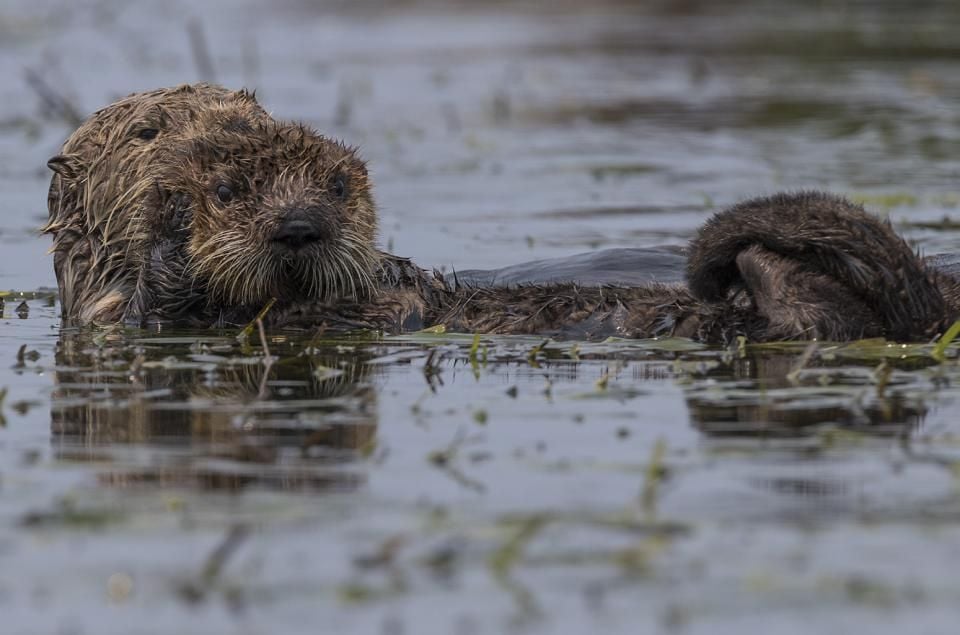Parasite Spread by House Cats Is Killing California’s Sea Otters
To counter the parasite’s spread, cat owners should keep their pets indoor and dispose of feline feces in the trash rather than the toilet or outdoors
/https://tf-cmsv2-smithsonianmag-media.s3.amazonaws.com/filer/82/09/82092743-6e3a-4d7b-b343-af41a4b587ab/otter2_img_8565l_trinawood_1-769x504.jpg)
Cats are among the world’s most destructive invasive species, preying on upward of four billion birds and 22 billion mammals every year.
New research suggests it’s time to add yet another victim to felines’ hit list. Per a paper published in the journal Proceedings of the Royal Society B, parasite strains wreaking havoc on California’s southern sea otter population originate in domestic cats, which spread the single-celled Toxoplasma gondii organism via their feces. As Peter Hess reports for Inverse, 12 of 116 sea otters examined for the study died primarily due to T. gondii; scientists identified the parasite as a “contributing” cause of death for another 21 of the marine mammals.
The team’s findings confirm long-held suspicions regarding felines’ role in sea otters’ demise. “This is the ultimate proof that strains that are killing sea otters are coming from domestic cats,” lead author Karen Shapiro of the University of California, Davis, tells the New York Times’ Francie Diep.
According to a UC Davis press release, cats typically contract T. gondii by eating infected birds and rodents. As the only known hosts of the parasite, domesticated and feral felines then spread deadly strains into their environment through oocysts—egg-like structures teeming with millions of immature T. gondii—shed in feces.
Forbes notes that rainwater carries contaminated cat excrement to the coast, sending oocysts flooding into sea otters’ habitats. Feces also enters the sea when disposed of outside or flushed down the toilet rather than properly bagged and placed in the trash. Since sewage treatment facilities are ill-equipped to kill parasite strains, oocsyts released through these methods can persist in local waterways for months or even years on end.
According to the release, T. gondii attach to kelp and marine snow upon reaching open waters. Snails eat these substances and, in turn, are then targeted by sea otters. The unsuspecting mammals also accidentally ingest oocysts when grooming or hunting down other food sources.

Although the Toxoplasma parasite can infect most warm-blooded animals, it requires cats in order to reproduce sexually and spread. Interestingly, the Times’ Diep writes, T. gondii doesn’t always prove fatal. Most humans struck with the infection suffer few or no symptoms, and otters that contract less dangerous parasitic strains often emerge relatively unscathed. (Pregnant women, fetuses and individuals with compromised immune systems are the exception to this rule, as evidenced by doctors’ warning to avoid cat litter boxes when expecting.)
Based on the scientists’ analysis, the most dangerous form of Toxoplasma is a strain known as Type X. This variation, spread by both wild and domestic cats, was responsible for all 12 of the otter deaths linked primarily with toxoplasmosis. Crucially, Forbes notes, the researchers pinpointed Type X’s origins to two feral cats and one bobcat living in the vicinity of the otters’ Monterey Bay habitat.
According to Diep, T. gondii hampers otters’ brain function, causing swelling, seizures, disorientation, weakness and eventually death. Animals that survive the initial onslaught of infection remain at risk, as their lack of motor skills leaves them vulnerable to shark attacks and fatal encounters with boats.
California’s sea otters aren’t the only mammals threatened by the parasite: As Inverse’s Hess reports, monk seals, beluga whales and dolphins are among the other marine species known to be affected by T. gondii.
To counter the spread of the Toxoplasma parasite, humans can keep their cats indoors, properly dispose of waste, and prevent their pets from killing potentially infected birds and rodents. If pet owners want to allow their cats outside, Stéphane Lair of the University of Montreal suggests to the Times, they should treat them more like dogs: namely, as “animals that should be contained, even in public.”
/https://tf-cmsv2-smithsonianmag-media.s3.amazonaws.com/accounts/headshot/mellon.png)
/https://tf-cmsv2-smithsonianmag-media.s3.amazonaws.com/accounts/headshot/mellon.png)